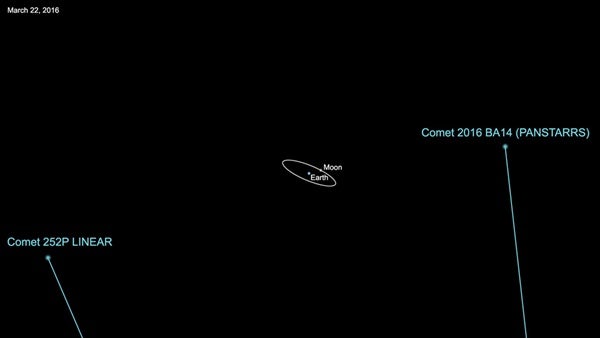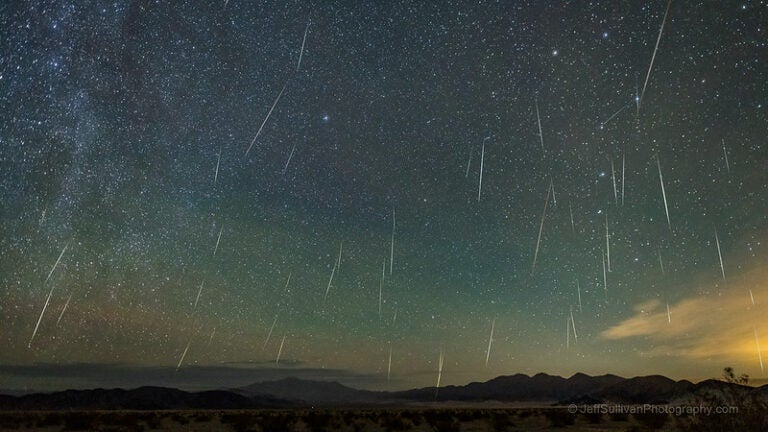“Comet P/2016 BA14 is possibly a fragment of 252P/LINEAR. The two could be related because their orbits are so remarkably similar,” said Paul Chodas from NASA’s Center of NEO Studies (CNEOS) at the Jet Propulsion Laboratory in Pasadena, California. “We know comets are relatively fragile things, as in 1993 when comet Shoemaker-Levy 9 was discovered and its pieces linked to a flyby of Jupiter. Perhaps during a previous pass through the inner solar system, or during a distant flyby of Jupiter, a chunk that we now know of as BA14 might have broken off of 252P.”
Observations made by the Hubble Space Telescope of comet 252P/LINEAR and by NASA’s Infrared Telescope Facility of comet P/2016 BA14 will further investigate their possible twin nature.
Comet 252P/LINEAR, approximately 750 feet (230 meters) in size, will zip past Earth on Monday, March 21, at a range of about 3.3 million miles (5.2 million kilometers). The following day, comet P/2016 BA14 will safely fly by our planet at a distance of about 2.2 million miles (3.5 million km). This will be the third closest flyby of a comet in recorded history next to comet D/1770 L1 (Lexell) in 1770 and comet C/1983 H1 (IRAS-Araki-Alcock) in 1983.
The time of closest approach for comet 252P/LINEAR on March 21 will be around 8:14 a.m. EDT. The time of closest approach for P/2016 BA14 on March 22 will be around 10:30 a.m. EDT. While both comets will safely fly past at relatively close distances, anyone hoping to see them will need powerful professional-grade telescopes due to their relatively small size.
The approaches of these two comets will be the closest they come to Earth for the foreseeable future. “March 22 will be the closest comet P/2016 BA14 gets to us for at least the next 150 years,” said Chodas. “Comet P/2016 BA14 is not a threat. Instead, it is an excellent opportunity for scientific advancement on the study of comets.”
The CNEOS website has a complete list of recent and upcoming close approaches, as well as all other data on the orbits of known NEOs, so scientists and members of the media and public can track information on known objects.










